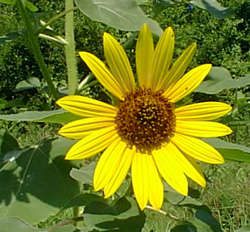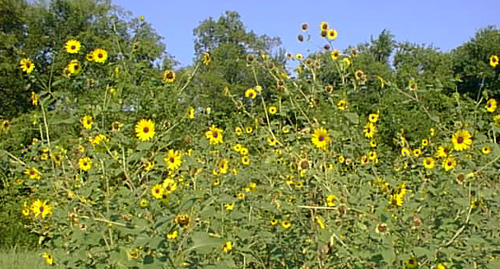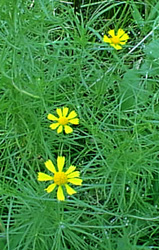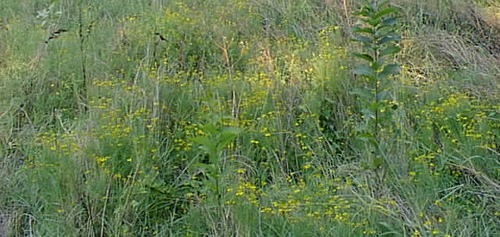
Common Sunflower (Helianthus
annuus)
(March to December)
This sunflower is the most common and abundant sunflower in the state of Texas. Hence, it is appropriately named. The plant is about six feet tall. It appears to be in a symbiotic relationship with ants, who walk up and down the the stalks to visit the flowers. The plant grows in the most remote part of the backyard. Indians used the it for medicine, fiber, and cordage. The seeds are eaten by birds.


